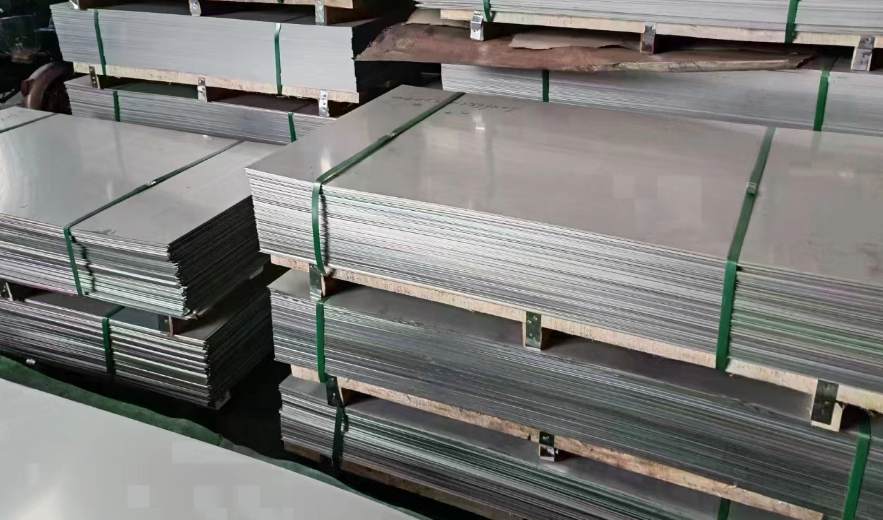Margir viðskiptavina okkar hafa slíka spurningu: 316 ryðfríu stáli vs 18-8 - hver er munurinn? Today, we will delve into a comparison between 316 stainless steel and 18-8 stainless steel, two grades that are often confused but have distinct properties and applications.

316 Ryðfrítt stál vs 18-8 – Hver er munurinn?
316 Stainless Steel vs 18-8 – 1. Definition
316 Ryðfrítt stál
316 ryðfríu stáli er an austenítískt króm-nikkel steel that belongs to the family of non-ferrous, corrosion-resistant alloys. It contains a higher percentage of molybdenum than other common stainless steel grades, which gives it exceptional resistance to corrosion in a wide range of environments.
18-8 Ryðfrítt stál
18-8 stainless steel, also known as Type 304 ryðfríu stáli, is a chromium-nickel austenitic steel. It is the most widely used stainless steel grade due to its balance of corrosion resistance, mechanical properties, and cost.
316 Stainless Steel vs 18-8 – 2. Composition:
The composition of 316 stainless steel is characterized by its high chromium (16-18%) and nickel (10-14%) content. The addition of mólýbden (2-3%) is what distinguishes 316 from other stainless steel grades. The chromium content forms a protective oxide layer on the surface of the steel, which prevents corrosion. The nickel content enhances the corrosion resistance and ductility of the material, while the molybdenum improves its resistance to pitting and crevice corrosion in chloride-rich environments.
18-8 stainless steel gets its name from its composition, which typically includes 18% chromium and 8% nickel. This composition gives the steel its excellent corrosion resistance and ductility. While it lacks the molybdenum content of 316 stainless steel, 18-8 stainless steel still offers good corrosion resistance in many environments.
316 Stainless Steel vs 18-8 – 3. Properties:
Eiginleikar 316 ryðfríu stáli
- Tæringarþol: 316 stainless steel is highly resistant to corrosion in marine environments, due to its molybdenum content. It can withstand exposure to saltwater and other corrosive agents, making it ideal for use in plumbing systems, chemical processing equipment, and surgical implants.
- Vélrænir eiginleikar: 316 stainless steel has good mechanical properties, including high tensile strength, ductility, and toughness. It can be easily formed and welded, making it suitable for a wide range of applications.
- Hitaþol: 316 stainless steel has good resistance to high temperatures, up to around 800°C (1472°F). It can maintain its mechanical properties and corrosion resistance even at elevated temperatures.
Properties of 18-8 Stainless Steel
- Tæringarþol: 18-8 stainless steel has good corrosion resistance in most environments, but it is not as resistant to chloride-induced corrosion as 316 stainless steel. It is suitable for use in indoor applications and some outdoor applications where exposure to chloride-rich environments is not severe.
- Vélrænir eiginleikar: 18-8 stainless steel has good mechanical properties, including high tensile strength, ductility, and toughness. It can be easily formed, welded, and machined.
- Kostnaður: 18-8 stainless steel is generally less expensive than 316 stainless steel due to its more common use and availability.
316 Stainless Steel vs 18-8 – 4. Applications:
316 stainless steel is widely used in marine applications, such as boat hulls, shipbuilding, and offshore equipment, due to its excellent corrosion resistance in saltwater environments. It is also used in chemical processing equipment, medical implants, and surgical instruments due to its biocompatibility and resistance to corrosion by bodily fluids. Additionally, 316 stainless steel is commonly found in plumbing systems, including water supply lines and fittings, due to its resistance to corrosion by chlorinated water.
18-8 stainless steel is widely used in a variety of applications, including kitchen appliances, sinks, and other household items due to its corrosion resistance and ductility. It is also used in automotive components, architectural elements, and industrial equipment. However, it is not suitable for use in marine applications or chloride-rich environments where the corrosion resistance of 316 stainless steel is required.
Niðurstaða
Thank you for reading our article and we hope it can help you to have a better understanding of the differences between 316 Stainless Steel vs 18-8 Stainless Steel. If you are looking for 316 Stainless Steel & 18-8 Stainless Steel suppliers online now, please don’t hesitate to contact Sino ryðfríu stáli.
Sem leiðandi birgir ryðfríu stálvara frá Shanghai, Kína, veitir Sino Stainless Steel viðskiptavinum hágæða ryðfríu stáli plötur, ryðfríu stáli rör, ryðfríu stáli rör, ryðfríu stáli ræmur, ryðfríu stáli vafningum, ryðfríu stáli plötumog ryðfríu stáli stangir á mjög samkeppnishæfu verði.
 : +86-18621535697
: +86-18621535697  : export81@huaxia-intl.com
: export81@huaxia-intl.com